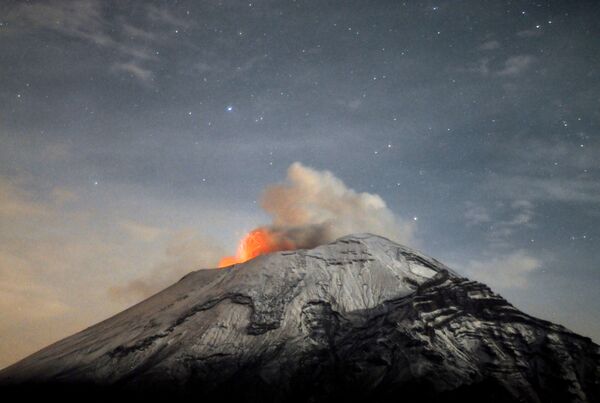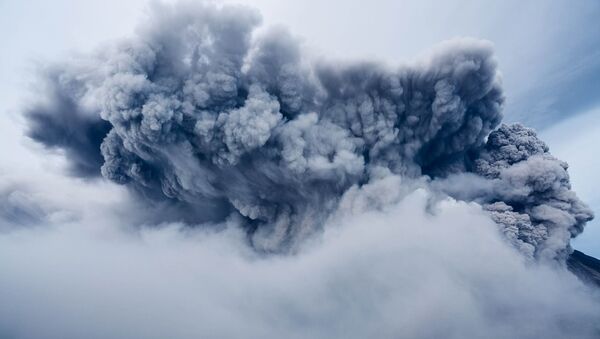Volcanic eruptions that are believed to have played a role in triggering a mass extinction event some 200 million years ago may contain a warning to mankind regarding the warming climate on Earth, according to a new study.
The authors of the paper, entitled “Deep CO2 in the end-Triassic Central Atlantic Magmatic Province”, published in Nature Communications on 7 April, claim the amount of carbon emissions released in a single pulse of volcanic eruptions is similar to what is anticipated to be generated by man’s activity during the 21st century. This forecast is based on a 2 degree Celsius increase in global temperatures above pre-industrial levels. The data pertaining to the extinction event, they believe, offers a warning relevant for our day.
As the team of scientists studied over 200 rock samples around the world, they investigated the history of volatiles in the magmas of the Central Atlantic Magmatic Province (CAMP).
The experts then examined the implications of these findings for magma eruption history, and impact on the global climate.
"Our estimates suggest that the amount of CO2 that each CAMP magmatic pulse injected into the end-Triassic atmosphere is comparable to the amount of anthropogenic emissions projected for the 21st century. Such large volumes of volcanic CO2 likely contributed to end-Triassic global warming and ocean acidification," the researchers write.
Manfredo Capriolo, of the University of Padova in Italy and a co-author of the study, was quoted by The Guardian as saying:
“This biotic crisis wiped out almost half of the existing species of the late Triassic in both marine and terrestrial realms”.
The “Great Dying”
Life on Earth has been faced with several catastrophic mass extinction events in the last 500 million years that killed off 75 - 90 per cent of all species on Earth.
The most studied mass extinction, famous for being caused mainly by a huge asteroid and marking the boundary between the Cretaceous and Paleogene periods about 66 million years ago, killed off the non-avian dinosaurs, opening the way for mammals and birds to evolve.

However, that event was an exception, claims science, as the greatest trigger for mass extinctions appears to be major changes in Earth’s carbon cycle. This refers to large igneous province eruptions - huge volcano eruptions that ejected massive amounts of heat-trapping gases such as carbon dioxide into the atmosphere. These events generated catastrophic global warming and other related features, such as ocean acidification and loss of dissolved oxygen in water.
Accordingly, around 252 million years ago, Earth faced the Permian-Triassic extinction, when in the course of about 60,000 years, 96 percent of all marine species and about three of every four species on land were wiped out.
This extinction was triggered by the Siberian Traps, an immense volcanic complex that erupted more than 720,000 cubic miles of lava across current day Siberia.
The eruption released at least 14.5 trillion tons of carbon - more than 2.5 times what would be generated if every ounce of fossil fuel on Earth were burned, according to National Geographic.
Climate models suggest that at the time, the warming and loss of an estimated 76 percent of oxygen by oceans account for most of the extinction’s species losses.
The mass extinction event some 252 million years ago, dubbed the “Great Dying”, known as the Permian-Triassic extinction, is believed to have killed off about 76 percent of all terrestrial and marine species on Earth. The catastrophic cataclysm, according to scientists, was the result of climate changes triggered by vast amounts of carbon dioxide released by volcanic eruptions at that time.

“The initiation of these eruptions created one of the warmest climate since the dawn of animal life on our planet, and coincided with massive extinction on land and in the oceans,” Jessica Whiteside, associate professor of geochemistry at the University of Southampton who was not involved in the study, was cited by The Guardian as saying.
Commenting on the findings to Newsweek, David Bond, from the UK's University of Hull, whose research focuses on environmental changes during mass extinctions and who was not involved in the latest study, emphasized that the study had lasting implications:
“Their study should send an important message to our policy makers — CO2 has driven some of the greatest extinctions in Earth history.”



